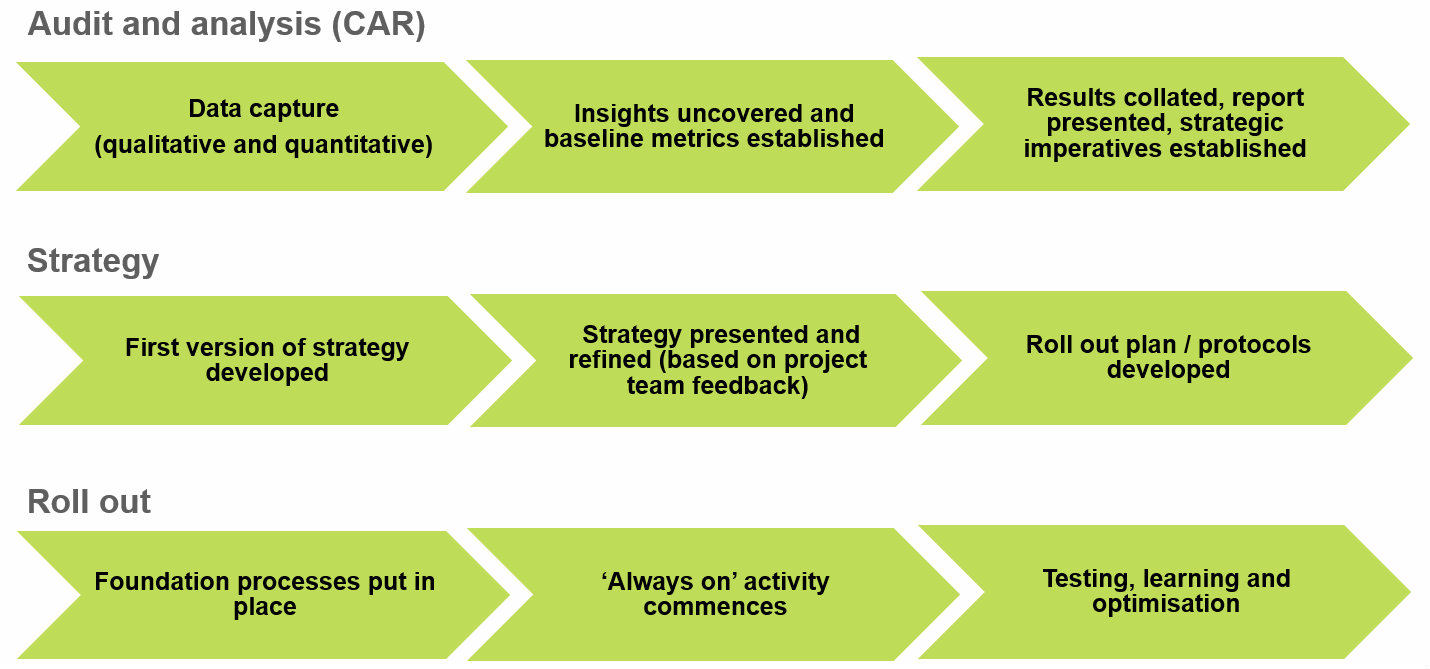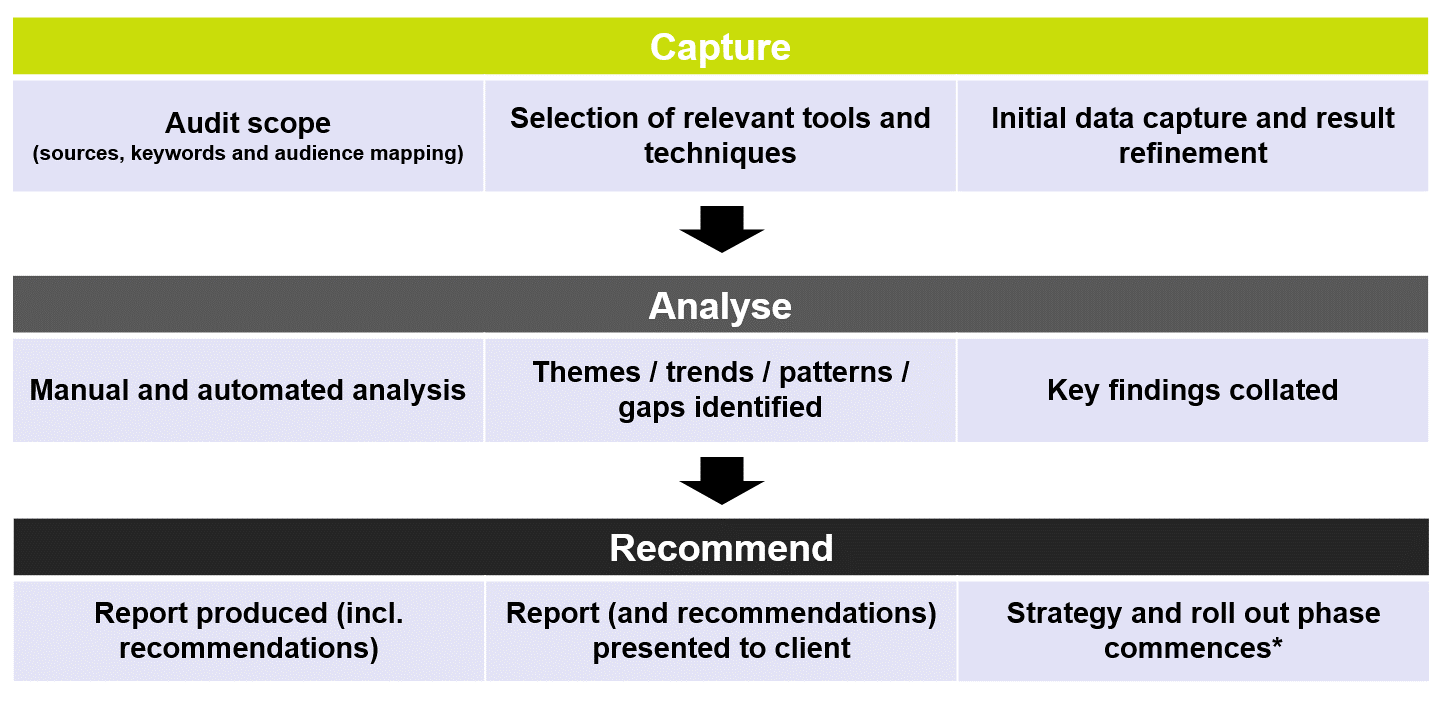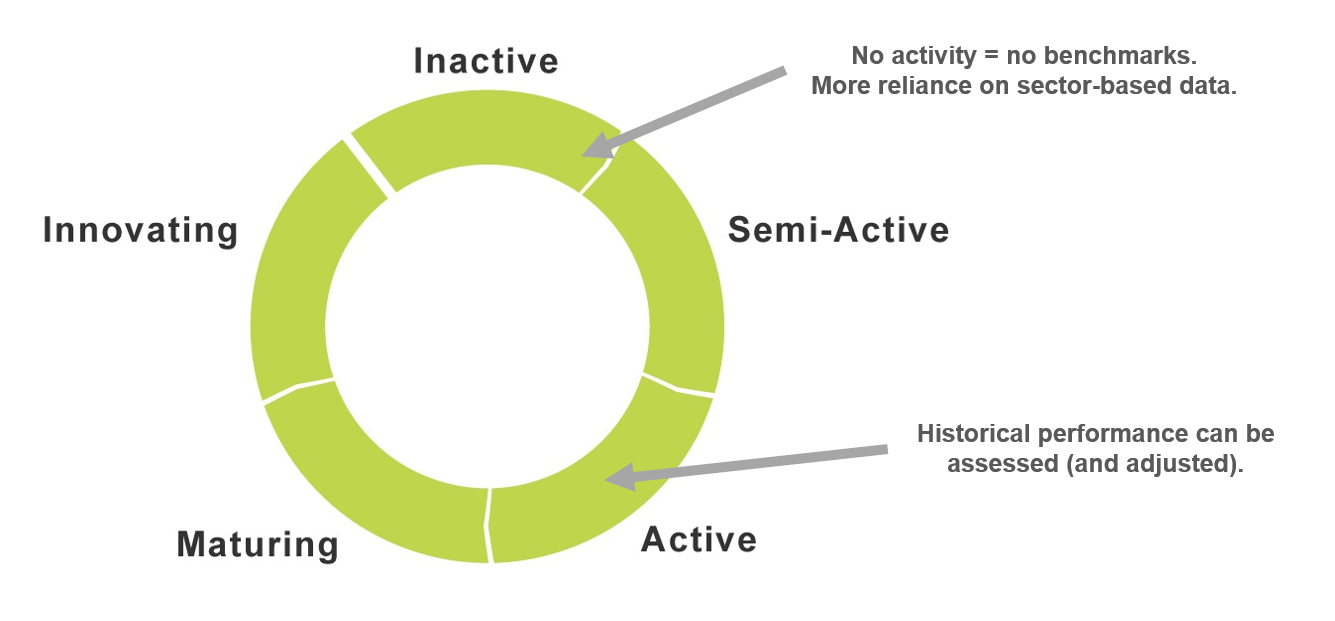Inside Look: Our Content Strategy Methodology

Inside Look: Our Content Strategy Methodology
One of the most common questions we’re asked is: “What does your content strategy methodology entail?”
We thought it would be useful to share a truncated version of our process, bringing to life the key elements as we see them.
This is not the only way to create a robust content strategy, it is simply the process we follow. If you’ve come across similar blog posts you may notice some subtle and not-so-subtle differences. Most importantly, a one size fits all mindset does not and can not apply, the approach most be tailored based on the organisation (and objectives) in question.
However, there is one element that should be featured in every content strategy methodology: The audit phase.
The digital content and channel audit, if done properly, should help ‘crack’ a big chunk of the strategic direction. It should help identify the content themes and formats that have the best chance of appealing to the audience you are trying to reach (and influence).
This is how we do it.
Our three-step content strategy methodology (at a glance)
The following is a top line overview of our content audit, strategy and roll out process.
It provides us with the road map we need to plan, produce, publish and promote content that adds genuine value to the target audience (while taking commercial objectives into account).
Kamber CAR: Our channel and content audit methodology
Before embarking on the audit processes, we ensure we have a hypothesis in place to narrow down the starting point and give the audit the (initial) direction it needs.
Once that has been established, we adopt a process called CAR: Capture, analyse and recommend.
Kamber CAR: Audit focus areas
We generally look at four areas during audit phase which attempts to get a complete picture of the digital landscape relevant to the client in question.
1. The business / organisation itself (online activity to date and internal structures / processes)
2. The sector that business / organisation operates in (including direct and indirect competitors)
3. The activity by online participants relating to the subject matter(s) relevant to that business / organisation
4. The behaviour being displayed by the target audience(s)
The audit is significantly shaped by the location of the business / organisation within the content marketing and social media life cycle as the chart below explains.
Kamber CAR: Some of the questions we ask and data points we look at
The questions we ask vary based on the focus area.
When looking at owned channels (website, social media and apps) and content, we look at:
- Google Analytics data – traffic sources, time spent on site / page, popular posts / pages etc
- Keyword strategy / performance – if is strategy is in existence it will be reviewed in line with performance indicators, if it doesn’t exist Google Webmaster tools will be used to understand which phrases are most visible and driving the most traffic
- Content themes – are visible themes in place? Are they generating the required responses?
- Specific pages / posts – what should be kept, adapted, deleted?
- Social media performance data – what is it telling us?
This is not an exhaustive list but should provide you with an idea of the types of things on our radar.
The questions we ask (and answer) in relation to the other focus areas are determined by the agreed audit scope and objectives of the exercise.
What is the ultimate aim?
This can vary depending on the client, but in most cases the audit is used to help shape content direction. Specifically, which content themes (and outputs) can help make the owned channel footprint cut through a very noisy and cluttered online environment.
The strategic outputs from our content strategy methodology
The insights gathered during the channel and content audit phase then enable the development of the strategy and roll out plan.
Strategic outputs include:
- The right content
- The right channels
- The right promotion
- The right processes
Is that everything?
No, that’s just a taste of what’s involved.
However, it hopefully introduces you to an approach that has helped our clients head in the right direction when it comes to content strategy and resulting activity.
Read more information that complements our content strategy methodology here.


